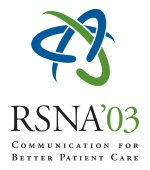Abstract:
HTML
Purpose: Automatic tube current modulation (ATCM) offers a unique technique of optimizing radiation dose associated with multidetector CT (MDCT) while maintaining a constant pre-selected image quality. To determine and optimize ultra-low radiation dose scanning protocol with acceptable image quality using ATCM for detection of urinary tract calculi with phantom experiment and patient study.
Methods and Materials: 16 radio-opaque kidney stones (2.5-19.2 mm) were embedded in the collecting systems of two bovine kidneys under a water bath. A kidney phantom was created by placing the bovine kidneys in an elliptical Plexiglas phantom (32 x 20 cm) filled with physiological saline. The phantom was scanned with a 16-slice MDCT (GE Lightspeed 4.X) using a fixed tube current (300 mA) and various ATCM settings (at noise indices of 14, 20, 25, 35 and 50) with remaining scan parameters held constant (140 kV, 0.938:1 pitch, 16x1.25 detector collimation, 5 mm slice thickness). Two subspecialty radiologists blinded to scan parameters reviewed the randomized images for presence of stones in each kidney and measured the size, site and Hounsfield value of each stone. Readers also graded conspicuity and margins of each stone using a 5-point scale (1=unacceptable; 3=acceptable; 5=excellent). Statistical analysis of the data was analyzed using Wilcoxon signed rank test and Student's t test, where appropriate. CTDIw and DLP values were recorded from the CT console. In addition, follow-up studies of 5 subjects with kidney stones evaluated with low-dose ATCM technique (noise index of 14 and 20) were evaluated in an identical manner.
Results: All 16 stones were identified on images acquired with fixed tube current and ATCM at noise index of 14, 20 and 25 (up to 77% reduced radiation dose versus fixed current). Three stones (<5 mm) were not visualized with ATCM technique at greater noise index of 50 and 35 (with 92% reduction in radiation dose). No significant statistical difference (p<0.5) between size, density, conspicuity and margins of visualized stones was seen between fixed tube current and ATCM techniques. We did not note any significant difference between conspicuity of kidney stones in 5 subjects who underwent CT scanning with low-dose ATCM technique and their previous fixed dose examinations.
Conclusion: Kidney stones less than 5mm can be adequately evaluated using ATCM technique with 56-77% reduction in radiation dose. Ultra-low radiation dose ATCM technique may be used for assessing kidney stones more than 5 mm in size.
Maher MD, M,
Optimization of Ultra-low Radiation Dose CT Scanning for Urinary Tract Calculi Using Automatic Current Modulation: A Phantom Experiment and Clinical Study. Radiological Society of North America 2003 Scientific Assembly and Annual Meeting, November 30 - December 5, 2003 ,Chicago IL.
http://archive.rsna.org/2003/3105404.html

